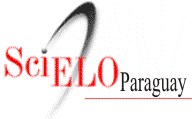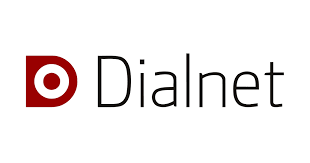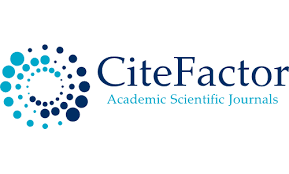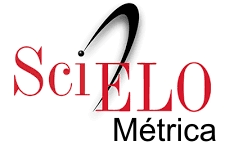Tratamientos biológicos (no farmacológicos) en Psiquiatría
Palabras clave:
terapia electroconvulsiva, estimulación cerebral, fototerapia, privación terapéutica del sueño.Resumen
Los psicofármacos y la psicoterapia son efectivos para muchos pacientes aquejados de trastornos mentales o problemáticas psicosociales. No obstante, algunos pacientes no responden a estas intervenciones, por lo que se necesitan de otras propuestas basadas en tratamientos biológicos (no farmacológicos). Estas técnicas se han ido desarrollando gracias a una mejor comprensión de los modelos neurofisiológicos y neuroanatómicos del humor, pensamiento y regulación del comportamiento, así como de estrategias más avanzadas para la modificación de la actividad neural. Con base en lo anterior, el objetivo de este artículo es presentar una actualización sobre los conceptos e indicaciones de la terapia electroconvulsiva, de las técnicas de estimulación cerebral, de la fototerapia y de la privación terapéutica del sueño.
Descargas
Citas
Holtzheimer PE, Mayberg HS. Deep brain stimulation for psychiatric disorders. Annu Rev Neurosci. 2011; 34: 289-307.
Chávez ME. Propuesta de protocolización para la práctica de la terapia electroconvulsiva en el Hospital de Clínicas de la Universidad Nacional de Asunción, Paraguay. Medicina Clínica y Social. 2017; 1(2): 126-42.
Eitan R, Lerer B. Nonpharmacological, somatic treatments of depression: electroconvulsive therapy and novel brain stimulation modalities. Dialogues in Clinical Neuroscience. 2006; 8(2): 241-58.
Bernardo M, Cervera S. Consenso Español sobre la Terapia Electroconvulsiva. Madrid: Sociedad Española de Psiquiatría; 1999.
Medina L, López M. Unidad de TEC ambulatoria y de mantenimiento con carácter regional. Murcia: Hospital Psiquiátrico Román Alberca; 2011.
Meduna L. New methods of medical treatment of schizophrenia. Arch Neurol Psychiatry. 1936; 35: 361-3.
Bennett AE. Convulsive (pentamethy lenetetrazol) shock therapy in depressive psychoses. Am J Med Sci. 1938; 196: 420-28.
Bini L. Experimental researches on epileptic attacks induced by electric current. Am J Psychiatry. 1938; 94(suppl): 172-4.
Cerletti U. Old and new information about electroshock. Am J Psychiatry. 1950; 107: 87-94.
Fink M. Convulsive therapy: a review of the first 55 years. J Affect Disord. 2001; 63: 1-15.
Sadock BJ, Sadock VA, Ruiz P. Kaplan & Sadock Sinopsis de Psiquiatría. 11ª ed. Barcelona: Wolters Kluwer; 2015.
Buj Álvarez I, Forcada Pach I, Castán Campanera E. Otros tratamientos biológicos. En: Bravo MF, Saiz J, Bobes J, editores. Manual del Residente en Psiquiatría. Tomo II. 1ª ed. Madrid: ENE Life Publicidad; 2009. p. 657-67.
Urretavizcaya M, Martínez-Amorós E. Tratamientos fisicobiológicos. En: Vallejo J, editor. Introducción a la psicopatología y la psiquiatría. 7ª ed. Barcelona: Elsevier; 2011. p. 506-12.
American Psychiatric Association. The practice of electroconvulsive therapy. Recommendations for treatment, training and privileging. 2nd ed. Washington; APA Press: 2001.
Bollwing T. How does the electroconvulsive therapy work? Theories of its mechanism. Canadian Journal of Psychiatry. 2011; 56: 13-8.
Cusin C, Dougherty DD. Somatic therapies for treatment-resistant depression: ECT, TMS, VNS, DBS. Biology of Mood & Anxiety Disorders. 2012; 2: 14-8.
Scott AI, Whalley LJ, Legros JJ. Treatment outcome, seizure duration, and the neurophysin respons to ECT. Biol Psychiatry 1989; 25: 585-97.
Pintor LP, Valldeoriola F, Fernández-Egea E, Sánchez R, Rami L, Tolosa E, Muñiz A, Martí MJ, Bernardo M. Use of electroconvulsive therapy in Parkinson disease with residual axial symptoms partially unresponsive to L-dopa: a pilot study. J ECT. 2012; 28(2): 87-91.
Bernardo M. Terapéuticas biológicas en psiquiatría. En: Soler PA, editor. Recomendaciones terapéuticas en los trastornos mentales. Barcelona: Ars Medica; 2005; 519-26.
American Academy of Child and Adolescent Psychiatry. Practice parameter for the assessment and treatment of children and adolescents with bipolar disorder. Journal of the American Academy of Child and Adolescent Psychiatry. 2007; 46:1: 1-12.
Stek ML, van der Frits FB. Electroconvulsive therapy for the depressed elderly. 2011; 12: 34-45.
Rodríguez H. Tratamiento farmacológico del trastorno bipolar en el embarazo. Medicina Clínica y Social. 2017;1(1):42-8.
Hoflich G, Kasper S, Hufnagel A, Ruhrmann S, MoIIer HJ. Application of transcranial magnetic stimulation in treatment of drug-resistant major depression - a report of two cases. Human Psychopharmacology. 1993; 8: 361-5.
Figiel GS, Epstein C, McDonald WM, Amazon-Leece J, Figiel L, Saldivia A, et al. The use of rapid-rate transcranial magnetic stimulation (rTMS) in refractory depressed patients. J Neuropsychiatry Clin Neurosci. 1998; 10: 20-5.
O'Reardon JP, Solvason HB, Janicak PG, Sampson S, Isenberg KE, Nahas Z, et al. Efficacy and safety of transcranial magnetic stimulation in the acute treatment of major depression: a multisite randomized controlled trial. Biol Psychiatry 2007; 62(11): 1208-16.
Cretaz E, Brunoni AR, Lafer B. Magnetic seizure therapy for unipolar and bipolar depression: a systematic review. Neural Plasticity 2015; 2015: 1-9.
Moscrip TD, Terrace HS, Sackeim HA, Lisanby SH. Randomized controlled trial of the cognitive side-effects of magnetic seizure therapy (MST) and electroconvulsive shock (ECS). Int J Neuropsychopharmacol. 2006; 9: 1-11.
Medscape Psychiatry [Internet]. New York; A new psychiatry subspecialty? c2013; [citado 24 jul 2017]. [3 pantallas]. Disponible en: http://www.medscape.com/viewarticle/804826
Williams NR, Okun MS. Deep brain stimulation (DBS) at the interface of neurology and psychiatry. J Clin Invest. 2013; 123(11): 4546-56.
Benabid AL. What the future holds for deep brain stimulation. Expert Rev Med Devices. 2007; 4(6): 895-903.
Synofzik M, Schlaepfer TE. Electrodes in the brain--ethical criteria for research and treatment with deep brain stimulation for neuropsychiatric disorders. Brain Stimul. 2011; 4(1): 7-16.
Gabilondo A, Bernardo M. Estimulación del nervio vago. ¿Un nuevo tratamiento biológico para la depresión? Psiquiatr Biol. 2002; 9(1):32–40.
Ashton AK. Depressive Relaps Ne after Vagus nerve stimulator Explantation. Am J Psychiatry. 2010; 167: 719-20.
Manta S, Dong J, Debonnel G, Blier P. Enhancement of the function of rat serotonin, and norepinephrine neurons by sustained Vagus nerve stimulation. J Psychiatry Neurosci. 2009; 34: 272-80.
Ghacibeh GA, Shenker JI, Shenal B, Uthman BM, Heilman KM. The influence of Vagus nerve stimulation on Memory. Cogn Behav Neurol. 2006; 19: 119-22.
Bodenlos JS, Kose S, Borckardt JJ, Nahas Z, Shaw D, O’Neil PM, et al. Vagus nerve stimulation acutely alters food craving in adults with depression. Appetite. 2007; 48: 145-53.
Golden RN, Gaynes BN, Ekstrom RD, Hamer RM, Jacobsen FM, Suppes T et al. The efficacy of light therapy in the treatment of mood disorders: a review and meta-analysis of the evidence. Am. J. Psychiatry 2005; 162: 656-62.
Paino M, Fonseca-Pedrero E, Bousoño M, Lemos-Giráldez S. Light-therapy applications for DSM-IV-TR disease entities. Eur. J. Psychiat. 2009; 23(3): 166-76.
McClung CA. Circadian genes, rhythms and the biology of mood disorders. Pharmacol Ther 2007; 114: 222-32.
Al-Abri MA. Sleep Deprivation and Depression: A bi-directional association. Sultan Qaboos Univ Med J. 2015; 15(1): e4-e6.
Breslau N, Roth T, Rosenthal L, Andreski P. Sleep disturbance and psychiatric disorders: A longitudinal epidemiological study of young adults. Biol Psychiatry. 1996; 39: 411-18.
Ng TH, Chung KF, Ho FY, Yeung WF, Yung KP, Lam TH. Sleep-wake disturbance in interepisode bipolar disorder and high-risk individuals: A systematic review and meta-analysis. Sleep Med Rev. 2014;792(14):70-7.
Adrien J. Neurobiological bases for the relation between sleep and depression. Sleep Med Rev. 2002; 6: 341-51.
Perlis ML, Giles DE, Buysse DJ, Tu X, Kupfer DJ. Self-reported sleep disturbance as a prodromal symptom in recurrent depression. J Affect Disord. 1997; 42: 209-12.
Institute of Medicine United States Committee on Sleep Medicine and Research. Functional and economic impact of sleep loss and sleep-related disorders. In: Colten HR, Altevogt BM, editors. Sleep Disorders and Sleep Deprivation: An unmet public health problem. Washington DC: National Academies Press; 2006; 137-72.
Peppard PE, Szklo-Coxe M, Hla KM, Young T. Longitudinal association of sleep-related breathing disorder and depression. Arch Intern Med. 2006; 166: 1709-1715.
Wu JC, Bunney WE. The biological basis of an antidepressant response to sleep deprivation and relapse: Review and hypothesis. Am J Psychiatry. 1990; 147: 14-21.
Voderholzer U. Sleep deprivation and antidepressant treatment. Dialogues in Clinical Neuroscience. 2003; 5(4): 366-369.
Orth DN., Shelton RC., Nicholson WE., et al. Serum thyrotropin concentrations and bioactivity during sleep deprivation in depression. Arch Gen Psychiatry. 2001; 58: 77-83.
Borbely A, Wirz-Justice A. Sleep, sleep deprivation and depression. Hum Neurobiol. 1982; 1: 205-10.
Bouhuys, van den Burg W., van den Hoofdakker RH. The relationship between tiredness prior to sleep deprivation and the antidepressant response to sleep deprivation in depression. Biol Psychiatry. 1995; 37: 457-61.
Torales J, Villalba-Arias J, Ruiz-Díaz C, Chávez E, Riego V. The right to health in Paraguay. Int Rev Psychiatry. 2014; 26(4): 524-529.
Arrom C, Núñez E, García SM, Arrom CM. Deudas pendientes del Estado paraguayo: derecho a la salud y a la salud mental. En: Coordinadora de Derechos Humanos del Paraguay, editor. Derechos Humanos en Paraguay 2016. Asunción: AGR Servicios Gráficos; 2016. p. 157-75.













